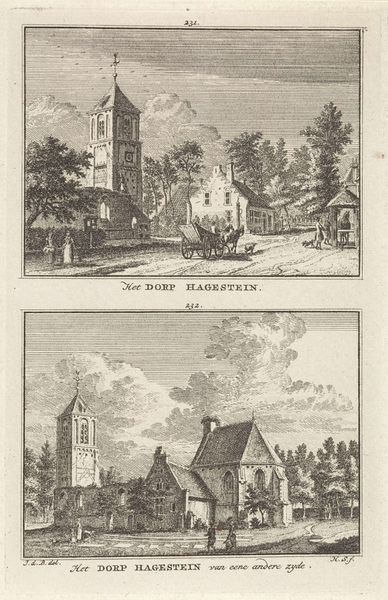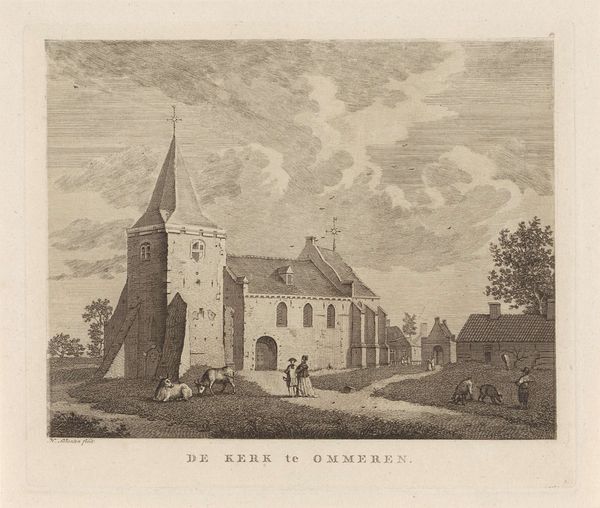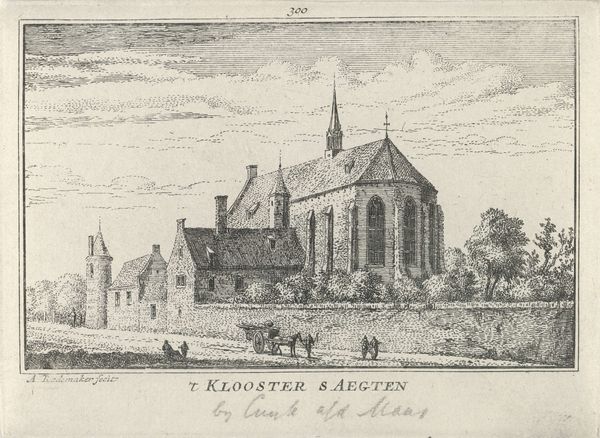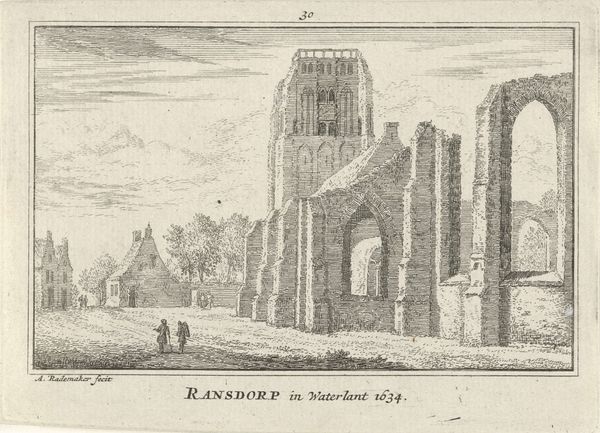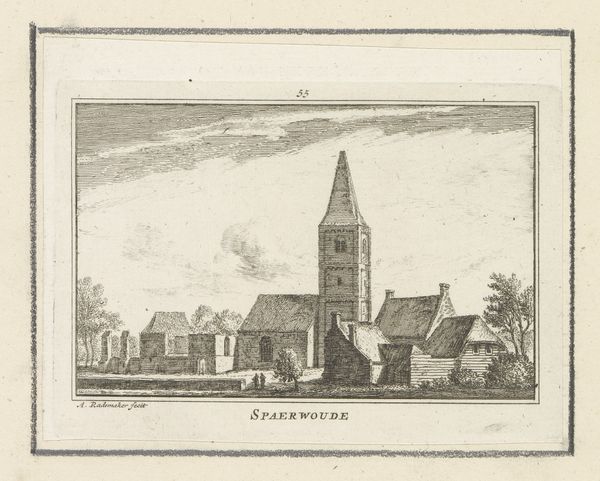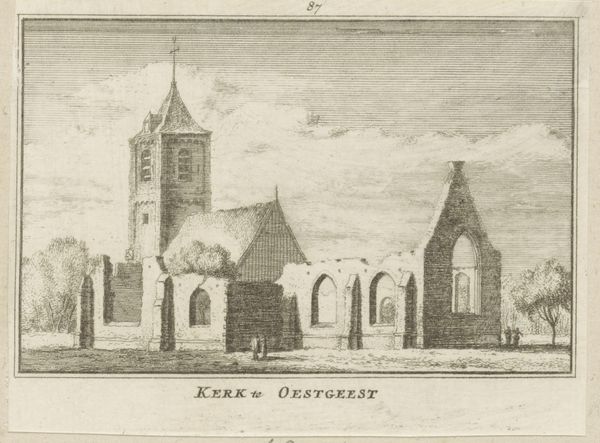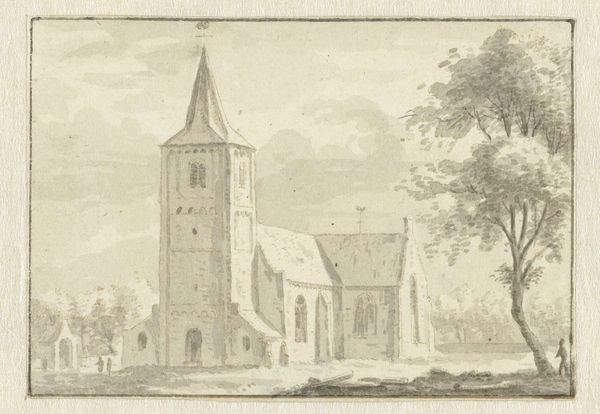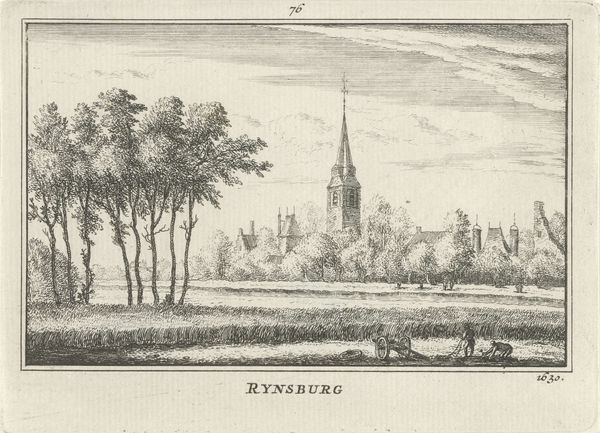
print, engraving
#
baroque
#
dutch-golden-age
# print
#
landscape
#
cityscape
#
engraving
Dimensions: height 80 mm, width 115 mm
Copyright: Rijks Museum: Open Domain
Editor: This print, titled "Gezicht op Ransdorp, 1630" by Abraham Rademaker, likely made in the early 1700s, depicts a scene in Ransdorp. It’s a really delicate engraving, a kind of peaceful snapshot in time. How do you interpret the imagery of this rural scene in its historical context? Curator: It's interesting how Rademaker, working nearly a century later, chooses to depict Ransdorp in 1630. Consider the socio-political landscape: the Dutch Golden Age was solidifying, fueled by trade and colonial expansion. Do you see any clues in the print itself reflecting these power structures? Editor: Well, I notice the church tower dominating the composition; perhaps it represents stability or the power of the church during this period? Curator: Precisely. Also, think about Rademaker’s potential audience. Cityscapes like these, in printed form, became popular commodities. Who consumed these images, and what social function did they serve in their lives? Were these romanticized views aimed at city dwellers, reminding them of a supposedly simpler, idyllic past? Editor: So, it might not be a completely objective view of Ransdorp, but rather a carefully constructed image to satisfy certain desires or needs of the viewers? Curator: Exactly. Images like this were powerful tools. They shaped perception, reinforced certain narratives about rural life versus urban life, and even subtly supported the status quo. Think about the lack of people working on the land, compared to two seated in conversation in the foreground. What does that imply? Editor: That's fascinating! I hadn't considered the political dimension embedded within what seems like a simple landscape. Curator: Indeed, art is rarely neutral. Studying its context illuminates how cultural values and power dynamics were – and are – visualized and circulated. It makes you question whose view you're seeing. Editor: This has really opened my eyes. I’ll definitely approach historical landscapes with a more critical lens going forward! Thanks.
Comments
No comments
Be the first to comment and join the conversation on the ultimate creative platform.

